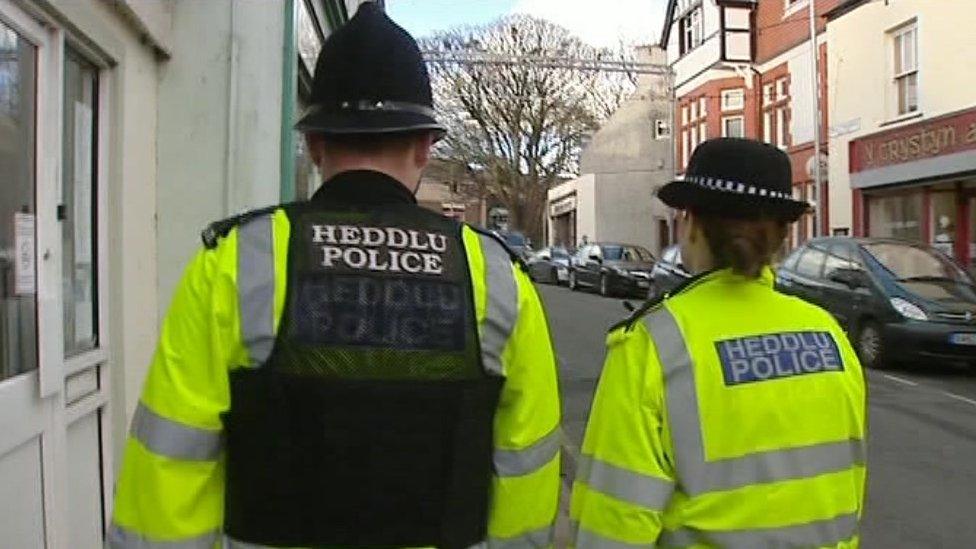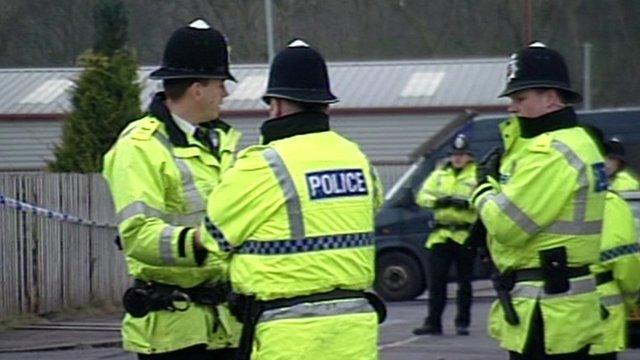Police forces face 0.6% budget cut for 2016/17
- Published

The four Welsh police forces are set to see their budgets cut by 0.6%, after plans for bigger cuts were shelved.
The Home Office confirmed on Thursday that all forces across England and Wales faced the same cut in 2016/17.
Police chiefs were alarmed at being asked to draw up plans for cuts of 25% and 40% in the run up to the chancellor's Autumn Statement.
However, George Osborne decided to protect police funding, saying "now is not the time" for it to be cut.
While individual forces are seeing their budgets reduced, extra money is being spent on counter-terrorism.
Police funding comes from the Home Office, Welsh government and council tax payers.
The proposed totals for 2016/17 are:
Dyfed-Powys - £50m
Gwent - £72.5m
North Wales - £72.7m
South Wales - £160m
In a response posted on his YouTube channel, external, Public Services Minister Leighton Andrews said that while the UK government had been cutting police numbers, the Welsh Labour government had invested in an extra 500 community support officers across Wales.
"We're proud of that investment ...our police need our support," he said.
North Wales Police Assistant Chief Constable Simon Shaw said: "There is a great deal of information to examine and consider before any detailed response is made."
Dyfed Powys Deputy Police and Crime Commissioner Tim Burton said the 0.6% cut was "in line with our estimates".
"We're holding a public consultation on the [council tax] precept level for 2016-17 and I encourage Dyfed-Powys residents to let their views be known," he added.
Gwent Police and Crime Commissioner Ian Johnston said: "Whilst there has been a reduction, this is not as bad as the brutal 25-40% cuts we were initially told to expect over the life of this Parliament, which would have spelt disaster for the police.
"However, we are still contending with the consequences of more than five years of severe budget reductions and we still need to make further savings to meet those demands and to also address unavoidable future service pressures."
- Published25 November 2015

- Published9 November 2015

- Published6 November 2015

- Published3 November 2015

- Published7 September 2015
